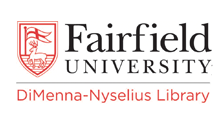Norm internalisation revisited: Norm contestation and the life of norms at the extreme of the norm cascade
Document Type
Article
Publication Date
3-2020
Abstract
Finnemore and Sikkink’s norms life cycle model (NLCM) is a powerful heuristic device that continues to be a mandatory point of reference for theoretical and empirical scholarship on norm change. Yet the internalisation stage as conceptualised in the NLCM is problematic. Drawing from Wiener’s Theory of Contestation, this article proposes to reconceptualise the norm internalisation stage as the phase at the extreme of the norm cascade in which inherently contested norms simultaneously enjoy formal validity, social recognition, and cultural validation among stakeholders. Unlike Finnemore and Sikkink’s, this conceptualisation focuses solely on norm validity and does not assume ‘almost automatic’ compliance. While Finnemore and Sikkink emphasise habit and institutionalisation as mechanisms of internalisation, the proposed conceptualisation highlights the role of applicatory contestation under conditions of high contestedness. Furthermore, I argue that internalised norms continue to be contested. Finally, my conceptualisation explicitly incorporates norm regression as the fourth stage of the NLCM. Norms might regress because they become obsolete, they change, or they are replaced. To assess the descriptive power of the proposed conceptualisation vis-à-vis Finnemore and Sikkink’s, the article applies them to the analysis of the norm that prohibits torture.
Publication Title
Global Constitutionalism
Repository Citation
García Iommi, Lucrecia, "Norm internalisation revisited: Norm contestation and the life of norms at the extreme of the norm cascade" (2020). Politics Faculty Publications. 31.
https://digitalcommons.fairfield.edu/politics-facultypubs/31
Published Citation
Iommi, Lucrecia García. "Norm internalisation revisited: Norm contestation and the life of norms at the extreme of the norm cascade." Global Constitutionalism 9, no. 1 (2020): 76–116. https://doi.org/10.1017/S2045381719000285.
DOI
10.1017/S2045381719000285
Peer Reviewed


Comments
© Cambridge University Press 2019
A link to full text has been provided for authorized subscribers.